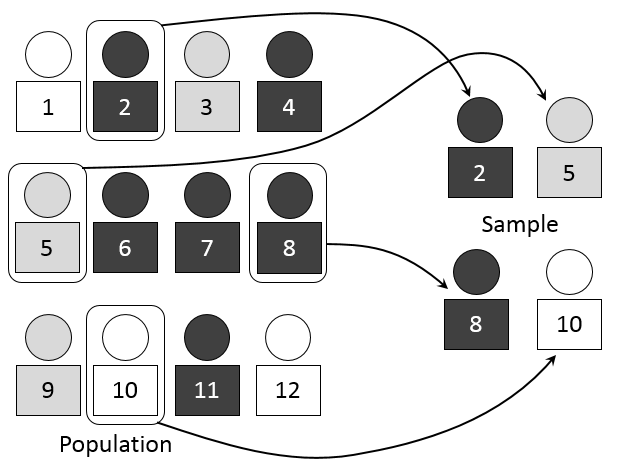
Is it appropriate to attempt to represent the entire population only by a sample? When you formulate your answer to this question, it may be useful to come up with an example of a question from your own field of interest that you may want to investigate.
A subgroup of the population refers to a smaller, more specific group of individuals within the larger population. This subgroup may share certain characteristics or traits that differentiate them from the rest of the population, such as age, gender, ethnicity, income level, or geographic location. Samples may be defined based on various criteria, depending on the research question or objective. For example, a study on the prevalence of diabetes in the United States may focus on a subgroup of the population that is over 65 years old or a subgroup that lives in a specific region of the country (Explorable.com, 2009).
In many cases, it is appropriate to use a sample to represent the entire population, especially when the population is too large or too diverse to study in its entirety. However, it is essential to ensure that the sample is representative of the population and that the sample size is sufficient for the research question being investigated.
For example, in the field of marketing research, a company may want to investigate the purchasing behavior of its customers. The target population would be all customers who have purchased from the company. However, it may not be practical or feasible to survey all customers. Therefore, a sample of customers can be selected to represent the entire customer population. The sample should be selected randomly and should be representative of the entire customer population in terms of age, gender, income, and other relevant characteristics.
In this case, it is appropriate to use a sample to represent the entire customer population as long as the sample is representative and large enough to provide meaningful results. However, if the sample is biased or too small, then the results may not be generalizable to the entire customer population.
Another example is in the field of healthcare research, where a study may want to investigate the effectiveness of a new medication. The target population would be all patients with a specific condition who may benefit from the medication. However, it may not be ethical or practical to include all patients in the study. Therefore, a sample of patients can be selected to represent the entire patient population. The sample should be selected randomly and should be representative of the entire patient population in terms of age, gender, severity of illness, and other relevant characteristics.
In this case, it is appropriate to use a sample to represent the entire patient population as long as the sample is representative and large enough to provide meaningful results. However, if the sample is biased or too small, then the results may not be generalizable to the entire patient population.
In conclusion, it is appropriate to attempt to represent the entire population only by a sample in many cases, as long as the sample is representative and large enough to provide meaningful results. However, it is essential to ensure that the sample is selected randomly and that the sample size is sufficient for the research question being investigated.
References
Explorable.com (2009, August 5). Sample Group. Retrieved Jun 20, 2023 from Explorable.com: https://explorable.com/sample-group
